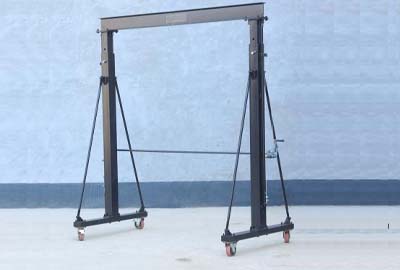Different Variations of Gantry Girder Designs and Their Applications in Construction
Types of Gantry Girder An Overview
Gantry girders play a crucial role in modern construction and transportation systems, providing the structural framework that supports various operations, particularly in industrial and construction settings. These steel frameworks are essential for supporting cranes, hoists, and other heavy machinery, aiding in the efficient movement of goods and materials. Understanding the different types of gantry girders is essential for engineers, designers, and construction professionals. This article will explore the various types of gantry girders and their applications.
1. Single Girder Gantry Crane
The single girder gantry crane is one of the most straightforward and economical options available. It consists of one main girder supported by two legs. This design is particularly suitable for lighter loads, generally ranging from 1 ton to about 10 tons. Single girder systems are often used in warehouses and factories for lifting and moving lightweight materials. Their relatively simple design allows for easy installation and lower costs, making them a favorite in many small-scale applications.
2. Double Girder Gantry Crane
In contrast to the single girder design, the double girder gantry crane features two main girders, providing enhanced strength and load capacity. This design accommodates larger and heavier loads, typically ranging from 10 tons to several hundred tons. Double girders are often employed in shipyards, construction sites, and large warehouses, where heavy materials need to be lifted and moved with precision. Additionally, the increased height under the hook in double girder systems allows for more versatility in handling tall loads.
A semi-gantry crane combines elements from both single and double girder systems. It features a single girder supported by one leg on the ground while the other side is mounted on an elevated structure or runway. This design is beneficial in areas where space is limited, allowing the crane to operate in conjunction with existing structures. Semi-gantry cranes offer a balance between load capacity and flexibility, making them suitable for specialized applications like maintenance and repair facilities.
4. Portable Gantry Crane
types of gantry girder

Portable gantry cranes are versatile and highly adaptable, designed for mobility. These cranes can be easily assembled and disassembled, allowing for temporary setups in various locations. They typically use a single girder design and can handle loads ranging from a few hundred pounds to several tons. Portable gantry cranes are popular in workshops, construction sites, and outdoor environments where space and load-handling requirements vary. Their lightweight construction and ease of use make them an ideal choice for small-scale lifting tasks.
5. Rail-Mounted Gantry Crane
Rail-mounted gantry cranes are specialized systems designed for operations along a fixed track. These cranes are commonly used in container terminals and shipyards to load and unload shipping containers efficiently. The design allows for a precise and stable lifting mechanism over a defined area, making it possible to handle heavy containers with ease. Rail-mounted gantry cranes are generally larger and more complex, capable of lifting loads exceeding 50 tons, and are essential for maximizing productivity in port operations.
6. Hydraulic Gantry Crane
Hydraulic gantry cranes utilize hydraulic mechanisms to lift and lower loads, providing excellent control and stability. These cranes are often employed in situations that require precise maneuvering of heavy loads, such as in construction and structural assembly. Hydraulic systems offer the advantage of lifting heavy weights with minimal effort, making them suitable for large-scale industrial applications. They can be designed as either single or double girder systems, depending on the lifting requirements.
Conclusion
Gantry girders come in various designs, each catering to specific operational requirements and load capacities. Whether it’s a single girder for light materials, a robust double girder for heavy lifting, or a portable version for versatile usage, understanding these options is critical for ensuring safety and efficiency in lifting operations. As industries evolve and demand more from their lifting equipment, innovations in gantry girder design will continue to play a significant role in enhancing productivity and operational effectiveness.
In conclusion, selecting the right type of gantry girder is essential for optimizing workflow and ensuring the safety of lifting operations. Understanding the different options available allows engineers and project managers to make informed decisions that align with their specific needs and constraints.
-
Portable 2000 lb Gantry Crane | Heavy-Duty & AdjustableNewsAug.30,2025
-
Versatile Lifting Solutions with Gantry and Overhead CranesNewsAug.29,2025
-
The Versatile Mobile Gantry Crane SolutionNewsAug.29,2025
-
Reliable Movement with Heavy Machinery Skates and RollersNewsAug.29,2025
-
Reliable Lifting Performance with 2000 lb Gantry Crane and 2 Ton Overhead SystemsNewsAug.29,2025
-
Maximize Lifting Efficiency with PML Magnetic LiftersNewsAug.29,2025
-
Efficient Relocation Starts with Reliable Machinery MoversNewsAug.29,2025
